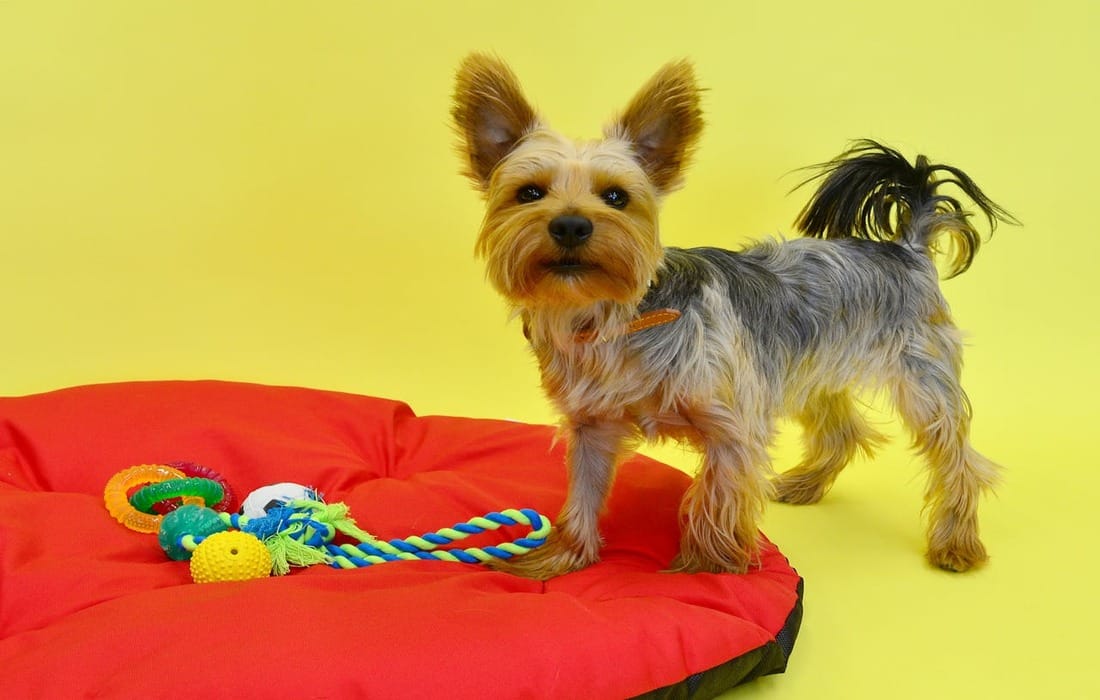Yoga is a centuries-old practice renowned for its ability to promote physical, mental, and emotional well-being. In recent years, yoga enthusiasts have been innovating new ways to enjoy this practice, including the delightful trend of doing yoga with dogs, affectionately known as “Doga.” If you’re a dog owner looking to bond with your furry companion, improve your fitness, and find inner peace, Doga might be just what you need.
In this comprehensive guide, we’ll explore everything you need to know about Doga, including its benefits, how to get started, tips for success, and more. Let’s dive
What Is Doga?
Doga, a blend of “dog” and “yoga,” is a unique practice that incorporates dogs into traditional yoga sessions. It’s not just about doing yoga around your dog; it’s about engaging them in the process, whether through poses, massages, or simply sharing the calming energy of your practice.
Doga can be as structured or as casual as you like. While some people prefer guided classes, others enjoy practicing Doga at home. The essence of Doga lies in bonding with your pet while improving your physical and mental well-being.
A Brief History of Doga
The concept of Doga is relatively new, originating in the early 2000s. Suzi Teitelman, a yoga teacher, is credited with popularizing Doga in the United States. Since then, it has gained traction worldwide, with studios offering classes and events tailored to pet owners and their dogs.
The Benefits of Practicing Yoga with Your Dog
Doga offers a wealth of benefits for both you and your furry companion. Let’s take a closer look:
For You:
- Improved Flexibility and Strength: Yoga enhances your physical fitness, and incorporating your dog can add extra resistance or stretch to certain poses.
- Stress Relief: Spending time with your dog releases oxytocin, the “love hormone,” which complements yoga’s stress-relieving effects.
- Enhanced Bonding: Sharing this activity strengthens your relationship with your dog, fostering trust and companionship.
- Mindfulness Practice: Dogs live in the moment, and practicing Doga with them can remind you to stay present.
For Your Dog:
- Socialization: Attending classes introduces your dog to new environments and other pets.
- Relaxation: Gentle stretching and massages during Doga can help your dog relax and alleviate tension.
- Physical Health: Dogs benefit from light exercise and stretching, which can improve their mobility and circulation.
- Mental Stimulation: Learning new activities keeps your dog mentally engaged and happy.
Getting Started with Doga
Preparing Yourself and Your Dog
Before you begin, ensure both you and your dog are ready for the experience. Here’s how:
- Choose the Right Space: Find a quiet, comfortable area where you can practice without distractions.
- Gather Supplies: You’ll need a yoga mat, water for both you and your dog, and treats to keep your dog motivated.
- Start Small: Begin with short sessions to gauge your dog’s interest and attention span.
- Check Your Dog’s Health: Consult your vet to ensure your dog is physically able to participate in Doga, especially if they have mobility issues.
Finding a Doga Class
Many cities offer Doga classes at yoga studios or community centers. If you prefer a more personalized approach, look for online tutorials or hire an instructor who specializes in pet-friendly yoga.
Doga Poses for Beginners
Here are some beginner-friendly Doga poses to get you started. Remember to be patient and let your dog engage at their own pace.
1. Downward Dog (with Dog Assistance)
- How to Do It: Begin in a traditional downward dog pose. Let your dog stretch alongside you or place them beneath you for added fun.
- Benefits: Stretches your hamstrings, calves, and shoulders while encouraging your dog to mimic stretching.
2. Heart-to-Hound Pose
- How to Do It: Sit cross-legged and place your dog in your lap or in front of you. Gently hug them while taking deep breaths.
- Benefits: Promotes bonding and relaxation.
3. Chaturanga with Dog Support
- How to Do It: Perform a chaturanga (low plank) while your dog lies on your back or by your side.
- Benefits: Strengthens your core and arms while giving your dog a sense of closeness.
4. Puppy Pose
- How to Do It: Kneel on the mat, extend your arms forward, and rest your forehead on the ground. Let your dog crawl underneath or beside you.
- Benefits: Stretches your spine and shoulders while your dog enjoys the interaction.
5. Shavasana with Dog Companion
- How to Do It: Lie on your back in Shavasana (corpse pose) while your dog rests on or beside you.
- Benefits: Promotes relaxation for both you and your dog.
Tips for a Successful Doga Practice


1. Be Patient and Flexible
Not all dogs will take to Doga immediately. Allow them time to adjust, and don’t force them into poses or positions.
2. Use Positive Reinforcement
Reward your dog with treats, praise, and affection to encourage participation and good behavior.
3. Keep Sessions Short
Dogs have shorter attention spans than humans. Start with 10–15 minutes and gradually increase the duration as your dog becomes more comfortable.
4. Maintain a Calm Environment
Minimize distractions and create a serene atmosphere with soft lighting and calming music.
5. Stay Attuned to Your Dog’s Needs
Pay attention to your dog’s body language. If they seem stressed or disinterested, take a break or adjust your approach.
Common Challenges and How to Overcome Them
Challenge 1: Distracted Dog
Some dogs may struggle to focus during Doga sessions.
- Solution: Use high-value treats and choose a quiet space free from distractions.
Challenge 2: Overexcited Behavior
Your dog might see Doga time as playtime.
- Solution: Allow your dog to release excess energy with a walk or play session before starting.
Challenge 3: Lack of Interest
Not all dogs will be eager participants.
- Solution: Respect your dog’s preferences and keep sessions lighthearted. Sometimes, just being near you while you practice is enough.
Frequently Asked Questions about Doga
1. Can all dogs participate in Doga?
Yes, but the level of participation will depend on the dog’s size, age, and temperament. Always consult your vet if you’re unsure.
2. Do I need prior yoga experience to try Doga?
No! Doga is beginner-friendly and focuses more on bonding than perfecting poses.
3. What if my dog doesn’t cooperate?
It’s normal for dogs to take time to adjust. Be patient and enjoy the journey together.
4. Are there specific breeds that are better suited for Doga?
All breeds can enjoy Doga, but smaller dogs are easier to lift and incorporate into poses.
Final Thoughts: Embracing the Doga Lifestyle
Doga is more than just a workout; it’s an opportunity to connect with your furry friend on a deeper level. Whether you’re a seasoned yogi or a curious beginner, practicing yoga with your dog can bring joy, relaxation, and countless memorable moments to your life.
Remember, the goal of Doga isn’t perfection—it’s presence. Embrace the imperfections, cherish the silly moments, and celebrate the unique bond you share with your dog. Namaste—and woof! 🐾













